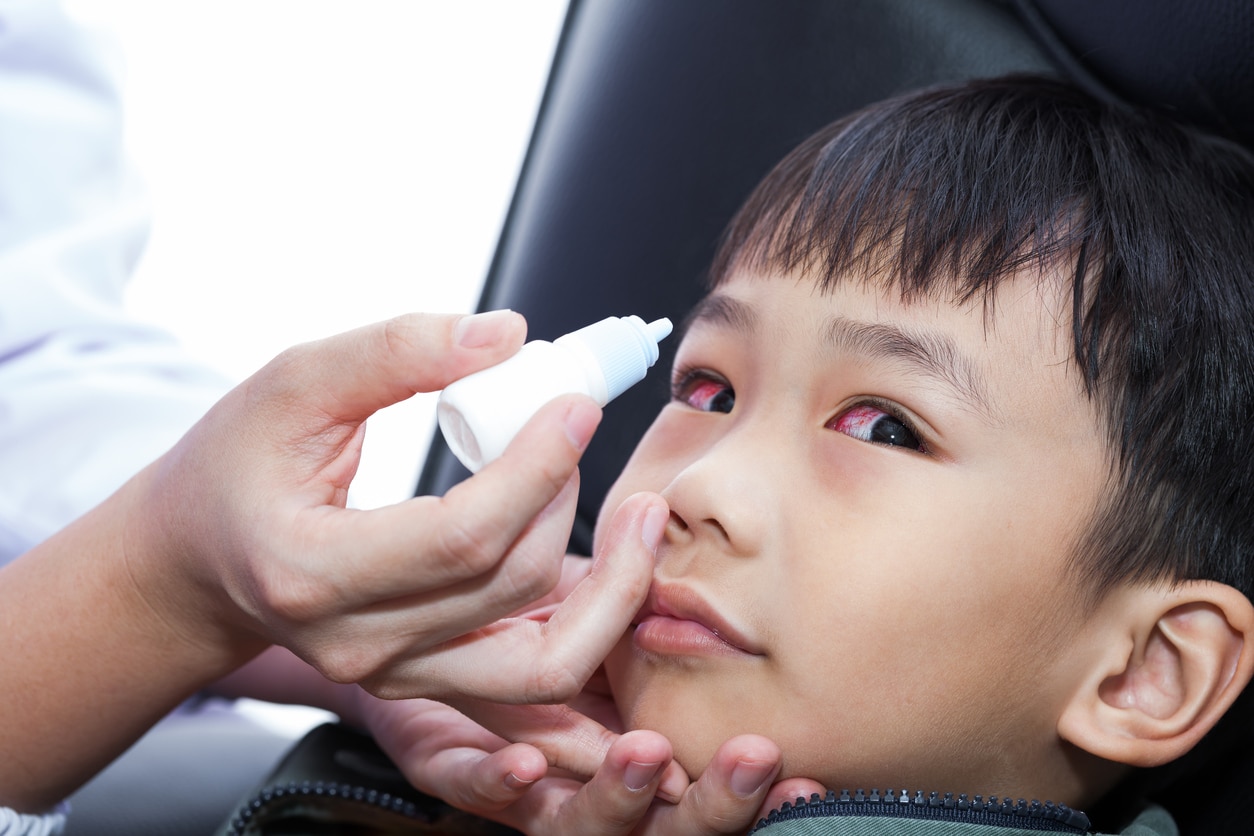
What To Do If Your Child Has Pink Eye
Pink eye can affect all ages of people, but this condition is particularly common among children. Because children have weaker immune systems and more contact with people spreading germs, almost every person gets pink eye at some point in their childhood. If you suspect your child has pink eye, do not panic. This condition may look gruesome, but it is often very easy to heal.
How to Tell If Your Child Has Pink Eye
Of course the very first thing you should do is make sure that your child actually does have pink eye. The illness shares symptoms with some more severe eye diseases, so you do not want to just assume that any eye issues are caused by pink eye. Pink eye is characterized by reddened, watery eyes with thick discharge. Your child will often feel like something is stuck in their eye or complain of itchy eyes. The discharge caused by pink eye can harden if not wiped away, so many children wake up with a thick crust around their eyes in the morning. Sometimes,this can be so hard that it prevents the child from actually opening their eyes. Normally, one eye will be affected first, and the other will start presenting symptoms within 12 to 48 hours.
Pain, being sensitive to light, and blurred vision are not normal symptoms, so you should seek medical care if your child reports these issues.
Figuring Out What Type of Pink Eye Your Child Has
It is often called pink eye due to the reddish appearance of the eyes, but the the actual medical name for this illness is conjunctivitis. Conjunctivitis is any sort of infection or inflammation of the clear membrane that covers the inner eyelid and whites of the eyes. It has many different underlying causes that can require different treatments, so it is important to determine the cause of your child's pink eye. Most cases of pink eye are caused by a bacterial infection that causes the classic symptoms of red eyes with thick discharge.
Viral pink eye is caused by a virus infecting the whole body, so it often accompanies a viral infection like measles or the flu. Pink eye can also be triggered by an allergy to pollen or animal dander. This type is particularly itchy and tends to recur whenever your child is exposed to the allergen again.
Curing Different Types of Pink Eye
Viral pink eye is the type of conjunctivitis clears up on its own as your child recovers from their viral illness. Bacterial pink eye often lingers until you start using a course of antibiotics. Your optometrist may prescribe an antibiotic eyedrop or ointment. Younger children may need help applying these medicines to their eyeballs.
Allergic pink eye is treated with either oral antihistamines, anti-inflammatory eye drops and topical medication. In all types of pink eye, optometrists recommend that patients avoid wearing contact lenses and touching their eyes until healed. Numbing drops are also recommended to help with comfort.
Helping Your Child Stay Comfortable
While you are waiting for the pink eye treatment to work, there are many things you can do to make sure that your child is comfortable. Cold compresses can ease itchiness, and warm compresses help to gently lift off hardened discharge without pain. To make a compress, soak a clean cloth in water of the desired temperature, wring it out, and apply it to your child's closed eyes for a few minutes at least. Only use a compress on the infected eye to prevent spreading it to an uninfected eye. Avoid eye drops for reddened eyes because they can worsen pink eye symptoms. Instead, use artificial tears or numbing eye drops to reduce itchiness or discomfort.
Keeping the Rest of the Family Disease Free
Most types of pink eye are incredibly contagious. They tend to spread rapidly through families, schools, and sports teams. Even after the symptoms of pink eye are gone, a child can be infectious for a little while. To keep everyone else in the house from getting pink eye, try to follow these steps: You and your sick child should wash your hands with antibacterial soap frequently. Do not let your sick child swim in a swimming pool or share eye cosmetics with others. Frequently wash all bedding, towels, and washcloths, and throw all tissues that touch an infected eye directly into the trash..
Preventing Your Child From Getting Pink Eye Again
Once your child's symptoms go away, make sure that they continue to take their medication for the prescribed amount of time. This will prevent a pink eye recurrence. If the pink eye is caused by an allergic reaction, try to identify the allergen and limit or prevent contact with it again. Any open bottles of eye drops used by your child or contact lenses that were used while your child had pink eye should be replaced. In the future, encourage your child to always wash their hands before touching their eyes.
Most cases of pink eye will start to get better within a day or two, but sometimes they can last up until few weeks. They can normally go back to school after symptoms improve. To learn more about treating pink eye, contact us to set up an appointment.